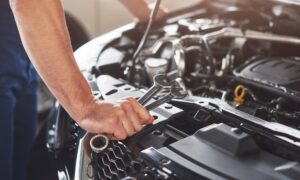
The car horn is a vital safety feature, used to alert other drivers, pedestrians, and cyclists of potential hazards or to signal your presence in emergency situations. As such, ensuring its proper function is a crucial part of vehicle safety inspections. A malfunctioning horn can undermine your ability to communicate on the road, increasing the risk of accidents. During regular vehicle inspections, mechanics test various systems, including the horn, to ensure they meet safety standards and are operating as expected.
Visual Inspection of Horn Components
The first step in detecting a horn malfunction during an inspection is a visual check of the horn and its components. Mechanics examine the horn unit, located typically in the front bumper or behind the grille, to ensure there is no visible damage or corrosion. They also inspect the wiring and connections for signs of wear, fraying, or loose connections, which could impact the horn’s functionality. If any issues are spotted, they can be addressed before testing the horn’s electrical operation.
Testing the Horn’s Sound
Once the physical components have been inspected, the next step is to test the horn itself. The mechanic will press the horn button or use the vehicle’s steering wheel controls to activate the horn. During this test, the sound of the horn is checked for clarity, volume, and consistency. A fully functional horn should emit a loud, clear sound. If the horn sounds weak, muffled, or inconsistent, it may indicate an issue with the wiring, switch, or internal horn components. Special choices are there for the Auto Repair in Lafayette, CO based services now.
Checking Electrical Connections and Relay
If the horn is not functioning properly, a more in-depth evaluation of the electrical system is conducted. The mechanic will check the horn relay, which controls the electrical current that powers the horn. A faulty relay can prevent the horn from receiving the necessary power to operate. Additionally, the wiring and fuse connections are tested for continuity and any signs of short circuits or interruptions. Problems with these components can often cause the horn to fail or operate intermittently.
Importance of Regular Inspections
Regular vehicle inspections help ensure that essential safety features like the horn are working correctly. Detecting malfunctions early—whether they involve the wiring, relay, or horn unit itself—ensures that your vehicle remains roadworthy and safe. Mechanics are trained to spot signs of horn failure during routine checks, preventing more serious issues from developing. By prioritizing inspections and addressing any horn-related problems promptly, drivers can ensure their safety on the road.
A properly functioning car horn is more than just an accessory; it’s a vital part of road safety. Routine inspections help ensure that the horn is always ready to function when needed most, making it a critical element of any comprehensive vehicle evaluation.






